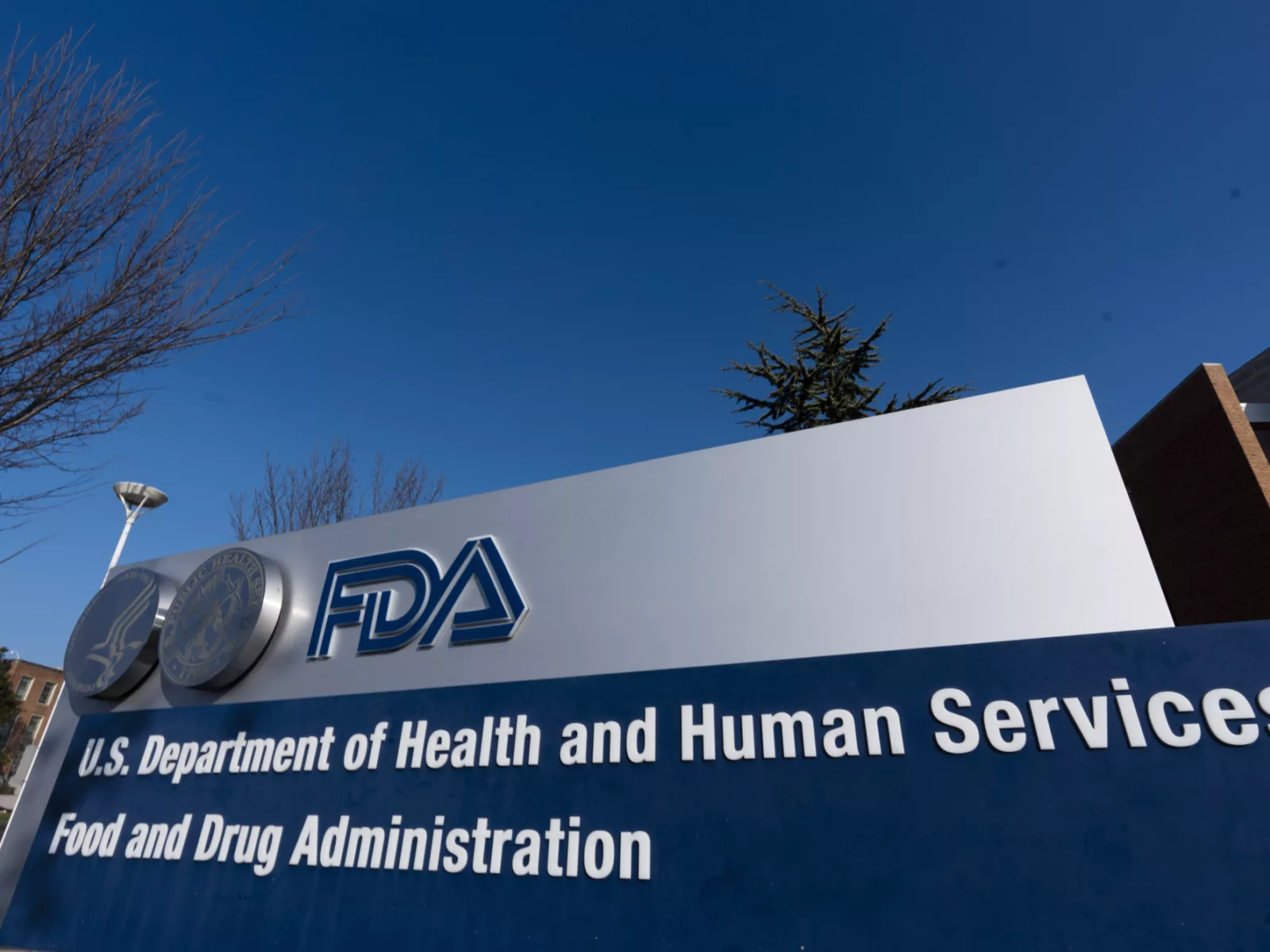WASHINGTON, D.C. — Dr. Reshma Ramachandran’s professional pursuits and passion for justice converged the week of May 16 in Washington, D.C., when she met with members of Congress, the U.S. Department of Health and Human Services, and the Food and Drug Administration on the progress of a must-pass bill — the Prescription Drug User Fee Act — which provides roughly half the FDA’s budget.
She had taken the train from New Haven, Connecticut, to the nation’s capital in her role as FDA task force chair with AV grantee Doctors for America, an independent advocacy organization of over 27,000 physicians and trainees across the country. She and fellow physician-advocates wanted to make sure the bill’s reauthorization, due by September, strikes an appropriate balance between ensuring timely access to promising treatments and certainty that these treatments truly work in patients prescribed them.
“With recent controversial FDA approvals such as aducanumab based on an unproven endpoint, not tested in patients like those mostly likely to receive the drug, and with serious safety concerns, we’re seeing legislators driven to act. They’re welcoming new ideas to make sure the FDA review process prioritizes patients, but are also wary of slowing down the process in a way that would delay access to treatments,” Ramachandran said.
“Thankfully, we’re on the same page — we see the value of pathways like accelerated approval in ensuring more timely access to treatments, especially for diseases where there is no alternative. We just want to make sure that manufacturers hold up their end of the bargain in confirming that the drug works for our patients in a timely manner.”
Ramachandran’s activities in Washington, D.C., stand 7,894 miles and a world apart from the impoverished South African township of Khayelitsha. Work being done there on behalf of AIDS/HIV patients drew the then-Brown University physics student in 2008. What she saw there changed her life, and work, forever.
While living and working in South Africa for four months, she witnessed an unusual and powerful alliance between health care providers and the patients whose needs they were advocating for, something she had never seen in the United States. “Entire communities were protesting in the streets and urging their leaders to take action to ensure equitable access to treatment. And I saw physicians standing with their patients,” she recalls. Her work since has been committed to improving access to safe and effective treatments for all Americans, especially people of color often omitted from crucial clinical trials.
Today, Ramachandran, 35, is a family physician and newly appointed Yale assistant professor of general internal medicine. As of July 1, she will be co-directing the Yale Collaboration for Research Integrity and Transparency.
AV caught up with Ramachandran to ask about her research and activism on patients’ behalf and considerations for policymakers as the Prescription Drug User Fee Act moves through the legislative process.
This interview has been edited for length and clarity.

Arnold Ventures
You’ve testified before Congress twice now on considerations for policymakers during the upcoming reauthorization of the FDA’s user fee agreements.
And in the policy sphere, we’ve read a lot about policymakers debating the role of real-world data (RWD) and real-world evidence (RWE) in generating evidence on drugs. Can you help us understand what RWD and RWE are and your thoughts on the ways they can best support regulatory decision-making? What’s driving your work there?

Reshma Ramachandran
RWD, real-world data, has been defined by the FDA as any information on health care derived from multiple sources outside typical clinical research settings, including electronic health records, medical claims data, registries, and even digital personal devices like an Apple watch. The analysis of this data can then be used to provide clinical evidence around the usage as well as benefits and risks of medical products — “real-world evidence,” or RWE. Since the passage of the 21st Century Cures Act in 2016, the FDA has been evaluating RWD and RWE to see if these might be used to inform FDA’s decisions in approving drugs, devices, and other medical products. There is certainly promise in using these sources of data as they’ve become more available and more robust.
The current debate in Congress is whether we’re there yet in using RWD and RWE instead of clinical trials to make regulatory approval decisions for medical products. If you listen to industry, they will say that yes, absolutely, RWD and RWE can replace clinical trials in making determinations particularly of efficacy and clinical benefit for new indications and for confirming that drugs that went through an expedited review process work. But we [as researchers and medical activists fighting for public health] have concerns that this is not quite the case. Research, including from the FDA itself, has shown the limitations of RWE in being able to emulate clinical trials. The only real conclusions that we can draw so far from all this is that RWD and RWE currently serve as a complement to clinical trials but cannot replace them. And if Congress passes legislation to allow for RWD and RWE to be used in lieu of traditional clinical trials, this would be the horse being let out of the barn.
And then there’s the issue of transparency. For example, physicians and patients seeking information on clinical trials, how they were designed, and their detailed results can search ClinicalTrials.gov, but we don’t have the same thing with RWE, as these would be largely exempt under current law from the same registration and results reporting requirements as with traditional clinical trials. The lack of a searchable database for such studies puts all of us — patients, clinicians, and payers — in the dark about the quality of evidence. If Congress allows for the FDA to make regulatory decisions solely based on such data, we may be operating in the dark.
Nevertheless, RWD and RWE could be valuable in helping to decentralize clinical trials to be more inclusive of people who live too far away to participate in one or have other barriers to access, particularly for communities of color or other populations that have been largely underrepresented in these studies.
There’s also huge interest in RWD and RWE from the health tech industry who are developing massive platforms for these data sources. They’re pushing pretty hard for this. They’re huge proponents of this use of data.

Arnold Ventures
There’s enormous opportunity to include real-world data in our understanding of drugs once they’re on the market. At the same time, there also seems to be a push to use real-world data to emulate randomized controlled trials. What have been some of the challenges to this approach as opposed to traditional randomized controlled trials?

Reshma Ramachandran
One of the big challenges is that these data sources were not created for studying safety or efficacy of medical products. My colleagues at Yale and I have looked at this and have found multiple limitations. For one, with electronic health data, there’s so much variability — are patients’ over-the-counter medications captured in the record? What happens to their record when they move from one health system to another? And in a 15- or 20-minute examination, can the clinician even document all the relevant findings about how a patient is feeling or functioning that would be important to know when assessing if a medical product works? All of this makes use of such RWD even more complicated.

The lack of a searchable database for such studies puts all of us — patients, clinicians, and payers — in the dark about the quality of evidence.Dr. Reshma Ramachandran Yale assistant professor of general internal medicine

Arnold Ventures
How can the U.S. bring more transparency to real-world evidence studies to advance this field or guard against inappropriate use?

Reshma Ramachandran
There are a few key elements. One is patient privacy — how is this information being used? Appropriately informed consent is key. Sometimes it’s not even thought of, which is horrifying! The transparency of the FDA’s rationale and decision-making process is often not clear, and with RWE we don’t have the same built-in safeguards as with clinical trials, including mandatory registration and submission of study design, results reporting, or sharing of patient-level data for independent review. In current policy from the FDA regarding RWE, it’s only encouraged, not mandated.

Arnold Ventures
What do you think Congress should consider on the use of real-world data and real-world evidence?

Reshma Ramachandran
Congress should continue to allow the FDA to evaluate RWD and RWE as they have been doing, but also task the FDA to make such evaluations more transparent and inclusive of independent experts. The FDA has been doing this to some extent — over the past year, the agency has released four guidance documents related to RWD and RWE for public comment, giving more of an insight of how they’re thinking. Congress, however, should mandate more transparency, including as they did with clinical trials, mandating registration and results reporting for any RWE studies.
Congress could also task the FDA to doing a much better job of educating clinicians like myself and the general public about how they make decisions that affect our daily lives. And now we’re entering a new era where our health data is being sold and analyzed for making regulatory decisions around medical products — but most of us are unaware. Several of my colleagues and myself are also looking closely into these issues, wanting to make sure there are safeguards in place. Besides providing evidence on how FDA’s decisions affect patients, our job is also to remind policymakers that the FDA’s ultimate mission is not to serve industry, but the American public. My hope is that we can level the playing field so that everyone is more aware of how the FDA operates, but it’s not something that will happen overnight.




